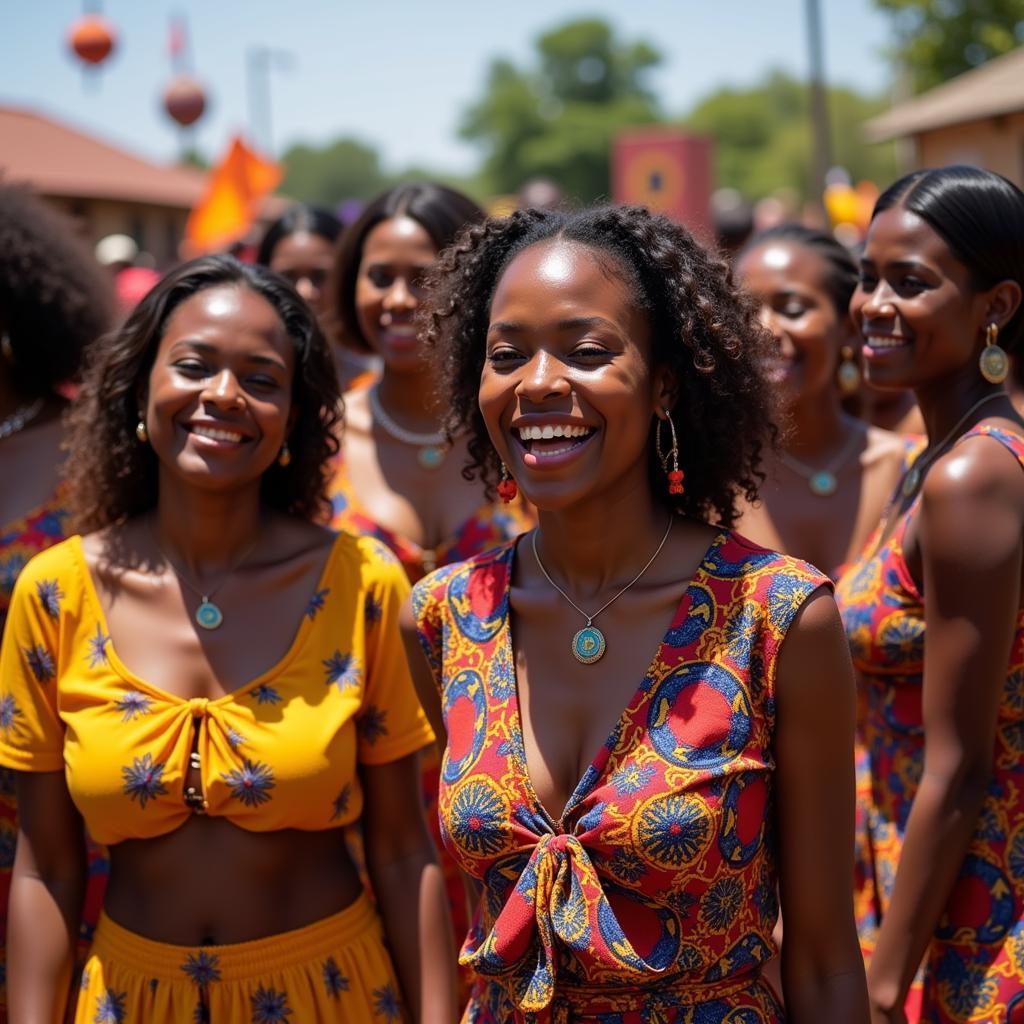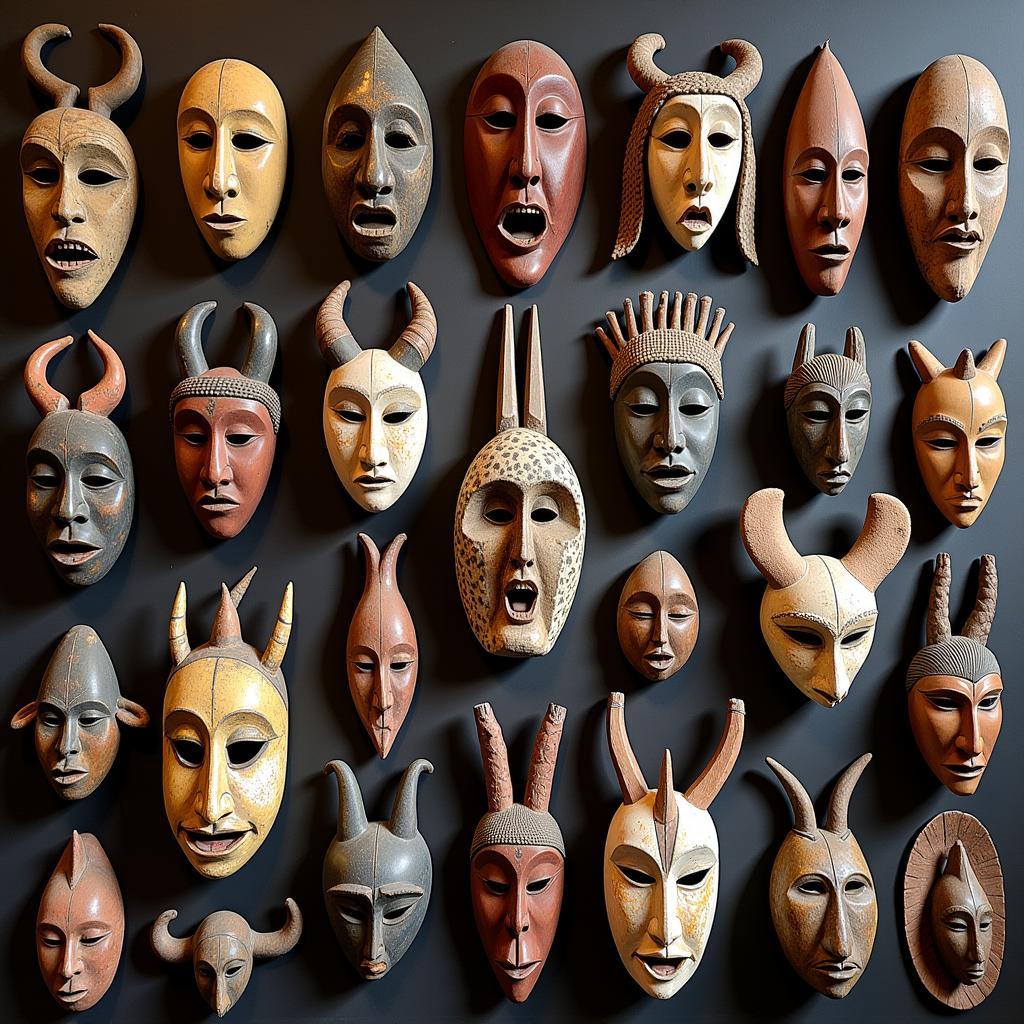Exploring the World of African Art Figurines
African Art Figurines are more than just decorative objects; they are powerful expressions of culture, spirituality, and history. These intricate carvings, cast figures, and sculpted forms offer a glimpse into the diverse traditions and beliefs of various African communities. From representing deities and ancestors to embodying social values and commemorating historical events, African art figurines hold profound meaning and significance.
African animal figurines, often depicting powerful creatures like lions and elephants, symbolize strength and leadership. These figures serve not only as artistic expressions but also as tangible links to the spiritual world, bridging the gap between the physical and metaphysical realms. Check out this link for more information: african animal figurines.
The Significance of Materials in African Figurines
The materials used in creating African art figurines are carefully chosen and often hold symbolic meaning. Wood, clay, metal, and even ivory are common materials, each with its own significance in different cultures. For example, wood might represent life and growth, while metal could symbolize strength and permanence. The choice of material can also influence the style and form of the figurine, contributing to its overall aesthetic and symbolic power.
African Figurines: A Window into Diverse Cultures
Across the vast continent of Africa, different ethnic groups have developed unique styles and traditions of figurine making. From the bold, geometric forms of the Kuba people of the Democratic Republic of Congo to the elegant, elongated figures of the Dogon people of Mali, each style reflects the specific cultural values and beliefs of its creators. Exploring these diverse artistic traditions reveals the rich tapestry of African artistic expression. For instance, some figurines represent deities and are used in religious ceremonies, while others commemorate historical events or serve as symbols of social status.
Understanding the Symbolism of African Figurines
The symbolism embedded within African art figurines is complex and multi-layered. A single figurine can hold a multitude of meanings, depending on its context and the specific cultural beliefs associated with it. Some figurines represent ancestors and are used to honor and connect with the past, while others embody abstract concepts such as fertility, power, or justice.
For example, among the Yoruba people of Nigeria, twin figures are highly valued and represent good fortune and prosperity.
Dr. Anika Nkosi, a renowned anthropologist specializing in African art, explains, “African figurines are not merely static objects; they are active participants in the social and spiritual lives of the communities that create them. They embody the values, beliefs, and histories of these communities, serving as powerful reminders of their cultural heritage.”
Collecting and Caring for African Art Figurines
For those interested in collecting African art figurines, it’s essential to be mindful of ethical considerations. Ensure that the figurines are acquired from reputable sources that prioritize ethical sourcing and fair trade practices. When caring for these valuable pieces, it’s important to protect them from extreme temperatures, humidity, and direct sunlight. Regular dusting with a soft cloth is also recommended. Consider checking out figurines related to African American jazz: [african american jazz figurines](https://omenkamag.com/african-american-jazz figurines/).
Professor Kwame Asante, an art historian specializing in African art, emphasizes, “Collecting African art figurines should be approached with respect and sensitivity. It’s crucial to understand the cultural context and significance of these pieces, and to ensure their preservation for future generations.” You might also find interesting African American wedding cake toppers: african american wedding cake toppers. Or perhaps, african cute baby boys and girl with toys toons would be more to your liking.
Conclusion
African art figurines are a testament to the rich cultural heritage and artistic ingenuity of the African continent. These powerful expressions of culture, spirituality, and history offer a unique window into the diverse traditions and beliefs of various African communities. By understanding the symbolism, materials, and cultural context of these figurines, we can appreciate their profound meaning and significance. Exploring the world of African art figurines is a journey of discovery, revealing the artistic brilliance and cultural depth of a continent brimming with stories waiting to be told.
FAQ
-
What are African art figurines typically made of?
- They are commonly made of wood, clay, metal, and sometimes ivory.
-
What is the significance of African art figurines?
- They hold cultural, spiritual, and historical significance, representing deities, ancestors, and social values.
-
How can I ethically collect African art figurines?
- Purchase from reputable sources that prioritize ethical sourcing and fair trade practices.
-
How should I care for my African art figurines?
- Protect them from extreme temperatures, humidity, and direct sunlight, and dust them regularly with a soft cloth.
-
Where can I learn more about African art figurines?
- Museums, art galleries, and academic resources specializing in African art are excellent sources of information.
-
Are there different styles of African art figurines?
- Yes, different ethnic groups have developed unique styles and traditions of figurine making.
-
What is the symbolism behind African animal figurines?
- They often represent strength, leadership, and a connection to the spiritual world.
When in need of assistance, please contact us by phone: +255768904061, email: [email protected] or visit us at Mbarali DC Mawindi, Kangaga, Tanzania. We have a 24/7 customer service team available to help you.



